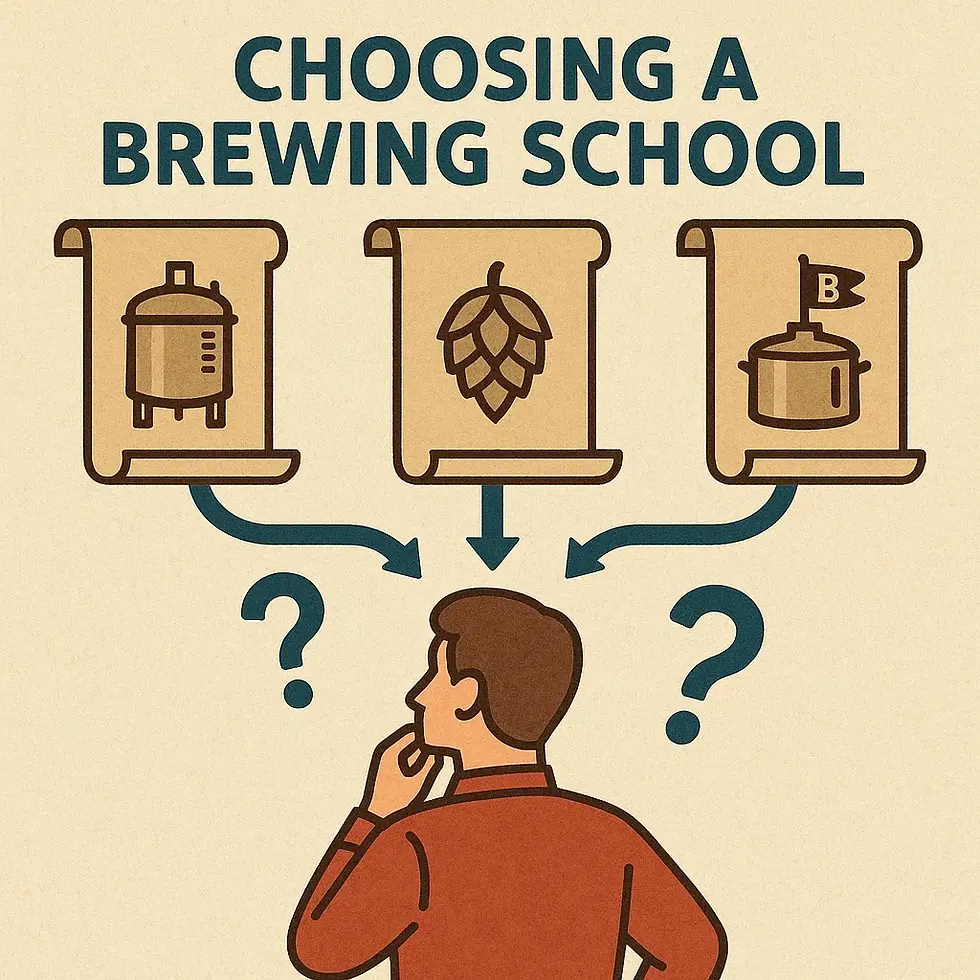Ale vs. Lager: The Measurable Brewing Divide
- Umang Nair
- May 21
- 2 min read
Updated: May 22
So, you’ve graduated from just grabbing whatever’s cold in the fridge—nice! Now it’s time to unlock one of beer’s biggest secrets: the ale vs. lager showdown. It’s not just some fancy brewer talk—this is where your beer journey really starts to get interesting.
Here’s the deal: ales and lagers aren’t just different names. They’re brewed differently, using different yeasts that either float to the top or sink to the bottom, doing their thing at different temperatures. Sounds nerdy? Maybe. But it’s also the magic behind why some beers hit you with bold flavors while others go down super crisp and clean.
Once you get the hang of it, choosing your next pint becomes way more fun. So let’s break it down—simple, tasty, and with a side of beer geek excitement!
The Five Key Differences Between Ales and Lagers

1. Fermentation Temperature
Ales: 15-24°C (59-75°F), can reach up to 26°C for specific styles
Lagers: 7-13°C (45-55°F) - significantly cooler conditions
2. Fermentation & Maturation Timeline
Ales: Complete process typically finishes in around 14 days
Lagers: Require 20-30 days minimum, with some styles needing even longer aging periods
3. Fermentation Position
Ales: Top-fermenting - the yeast works at the top of the fermenter and creates a thick krausen (foam) layer
Lagers: Bottom-fermenting - the yeast settles at the bottom of the tank during fermentation
4. Ester Production (Fruity Flavors)
Ales: High ester production creating distinctive fruity flavors. Esters are aromatic compounds created during fermentation that give beer notes like banana, apple, and pear
Lagers: Minimal ester production for a "clean" flavor profile that allows the malt and hop character to shine through without fruity interference
5. Yeast Family
Ales: Saccharomyces cerevisiae - a hardy yeast family that thrives at warmer temperatures and creates more flavor compounds
Lagers: Saccharomyces pastorianus - a hybrid yeast that evolved in cold European caves and creates fewer byproducts during fermentation
The coolest part about craft beer? All that behind-the-scenes brewing magic actually shows up in your glass. Ales and lagers aren’t about which one’s better—it’s more like choosing between biryani and dosa. Both are great, just different vibes for different moods.
If you’re just stepping into the craft beer scene in India—especially here in namma Bangalore—try tasting a crisp German-style pilsner next to a bold American pale ale. One’s smooth and refreshing, the other’s hoppy and full of character. You’ll start to feel the difference, not just taste it.
Think of it as a flavour journey, brewed with science, tradition, and a bit of madness. Cheers to exploring the world of beer, pint by pint!



Comments